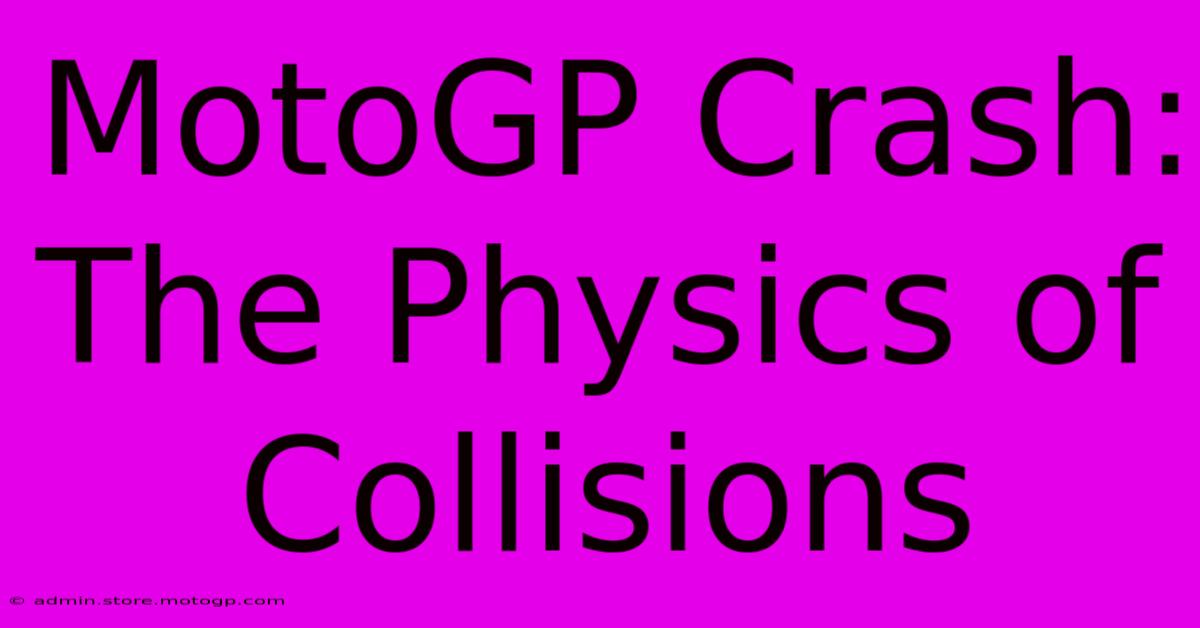MotoGP Crash: The Physics Of Collisions

Table of Contents
MotoGP Crash: The Physics of Collisions
MotoGP racing, a spectacle of speed and skill, is unfortunately punctuated by crashes. Understanding the physics behind these collisions is crucial for improving rider safety and designing safer equipment and tracks. This article delves into the science of MotoGP crashes, exploring the forces at play and the factors contributing to their severity.
The Forces in a MotoGP Crash
A MotoGP crash isn't a single event; it's a complex chain reaction involving several distinct phases and significant forces.
1. The Initial Impact:
The initial impact is often the most dramatic. The force of the collision depends on several factors:
- Speed: Higher speeds exponentially increase the kinetic energy involved. A small change in speed dramatically increases the impact force. This is why even minor collisions at high speeds can have devastating consequences.
- Angle of Impact: A head-on collision generates significantly more force than a glancing blow. The angle directly affects the distribution of force and the resulting damage.
- Mass: While the rider's mass is relatively small compared to the motorcycle, the combined mass still contributes to the overall momentum.
- Coefficient of Restitution: This describes how much energy is lost during the collision. A lower coefficient means more energy is absorbed during the impact, reducing the rebound and potentially mitigating some damage. The materials involved in the collision (bike parts, track surfaces, protective gear) significantly influence this factor.
2. Secondary Impacts:
After the initial impact, the rider and motorcycle can experience multiple secondary collisions. This could involve:
- Sliding on the Track: Friction between the rider's leathers and the asphalt generates significant heat and abrasion forces. The abrasions cause injuries, while the heat can damage protective gear.
- Impact with Other Objects: This includes other bikes, track barriers, or even debris from the initial crash. These secondary impacts can compound injuries and significantly increase the severity of the crash.
- Rider's Body Impacts: Internal injuries can occur from the rider's body impacting the motorcycle, or the ground.
3. Rotational Forces:
High-speed crashes often involve significant rotational forces. The rider and motorcycle can tumble, adding another layer of complexity to the dynamics. This tumbling motion can lead to further impacts and injuries.
Mitigating the Effects of Collisions
Several strategies aim to minimize the consequences of MotoGP crashes:
- Track Design: Run-off areas, strategically placed barriers, and improved track surfaces are designed to absorb impact energy and redirect riders away from hazardous areas.
- Motorcycle Design: Improved chassis designs and safety features, such as improved fuel tank construction and integrated safety features, are constantly being developed.
- Protective Gear: Advanced leathers, helmets, and other protective gear play a crucial role in reducing injuries. These items are designed to absorb and distribute impact forces, providing crucial protection.
- Rider Training: Rigorous training programs equip riders with the skills to handle potentially hazardous situations and minimize the risk of accidents.
The Role of Physics in MotoGP Safety
Understanding the physics of MotoGP crashes is fundamental to improving safety. By analyzing the forces involved, researchers and engineers can design safer tracks, motorcycles, and protective gear, contributing to a safer racing environment for riders. Further research into the complex dynamics of these collisions promises to lead to even more significant improvements in safety technology and rider training. The ongoing quest for enhanced safety in MotoGP reflects a deep commitment to minimizing risk and ensuring the well-being of the riders. Analyzing these crashes not only helps improve rider safety but also increases the overall excitement and safety standards for the sport as a whole.

Thank you for visiting our website wich cover about MotoGP Crash: The Physics Of Collisions. We hope the information provided has been useful to you. Feel free to contact us if you have any questions or need further assistance. See you next time and dont miss to bookmark.
Featured Posts
-
Why Moto Gp Announcers Matter
Feb 19, 2025
-
Cota Track Day Your Next Big Adventure
Feb 19, 2025
-
Moto Gp Race Tracks Creating Memories That Last A Lifetime
Feb 19, 2025
-
Level Up Your Racing Exploring Different Motorcycle Categories
Feb 19, 2025
-
Cota Transportation Save Money On Your Trip
Feb 19, 2025
